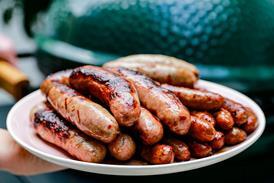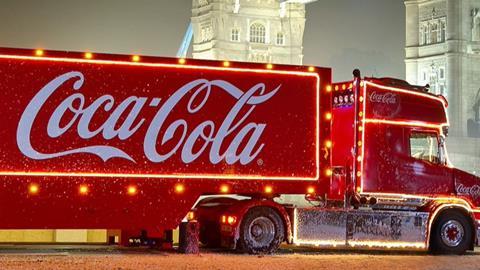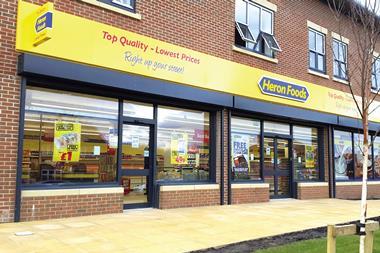The bitter fight between the food industry and health campaign groups over the government’s plans for a ban on junk food advertising has been perhaps the most symbolic conflict of all in the war on obesity.
Often oversimplified as a battle between health campaigners and the powerful food industry lobby, the rollercoaster ride of the proposals also typifies the damaging uncertainty spread by the ‘will they, won’t they’ approach to public health of the last government – that seems to have been inherited by the new one.
Yet the future of the HFSS ad clampdown, and the 9pm TV watershed that comes with it, took a new twist last month when it was delayed for a third time. It was the government’s intervention in a bid to prevent the legislation extending to company brand ads that do not identify specific ‘less healthy’ products.
So has this latest move finally cleared up the chaos which has reigned over the proposals? And where does it leave food companies looking to advertise their products – not to mention the campaigners who are furious at the backtrack?
The latest delay
Last month’s intervention saw the government postpone the ban, which was due to come into force in October, until 5 January 2026. It wants to rewrite the regulation to ensure a large number of brand ads are not “accidentally” caught up in the net, at a cost to ad revenues which advertisers claim would run into hundreds of millions.
The backtrack came in the wake of a growing threat of legal action to challenge the ban and fury from advertisers and food companies, who claimed they were unable to plan essential marketing campaigns because of uncertainty over how the legislation should be interpreted.
The Grocer revealed in February that several food companies had instructed lawyers to prepare a legal challenge, claiming the threatened interpretation of the ban “overreached” the original aims of the legislation and would effectively result in whole sectors of the industry, such as confectionery and food-to-go companies along with snack brands, becoming X-rated.
Much of the anger revolved around fears companies would be barred from marketing healthier variants of products, which they said “flew in the face” of tackling obesity.
The legal threat followed a consultation launched by the ASA, which will act as policeman for Ofcom on the new rules, suggesting generic brand ads from companies producing HFSS products would be blocked, even if they did not specifically include HFSS products. It reversed the initial guidance brought out at the start of last year.
The ASA this week placed its consultation on hold to allow time to assess the implications of the latest delay and determine its approach to implementation “as further detail becomes available”.
Lats month’s delay is the second time the Labour government has attempted to clarify that generic brand ads are not the intended target of the ban, with a previous statement in April not going far enough to satisfy food company lawyers.
Last week a statutory instrument went before parliament to change the date the law will come into force.
Voluntary efforts
In the meantime, thanks to a voluntary industry agreement signed by 20 organisations representing advertisers, broadcast and online platforms, the 9pm TV watershed will nevertheless effectively be in place from October this year. A voluntary total ban on HFSS ads online will take effect from the same date.
However, as the government goes away to recraft the wording of the legislation, ASA CEO Guy Parker warns that come January advertisers will still likely face uncertainty over whether their ads are permissible.
“There is never certainty when it come to rules and guidance,” Parker told The Grocer Marketing Business Lunch last week.
“There are still going to be boundaries that have to be addressed that rely on judgement.”
Yet Parker made clear he believes Labour’s intervention is a major victory for the advertising industry.
“Your lobbying has worked,” he declared. “This is what the industry and broadcasters have been calling for.”
If that doesn’t annoy them enough, the health lobby will fizz at Parker’s suggestion that it means the totemic Coca-Cola truck, rolled out by the fizzy drinks giant at Christmas, will in future be free to return to our screens, as long as it does not include specific product shots of HFSS drinks.
“If you can imagine a hypothetical variant that edits out specific shots of HFSS products, then I think it’s very likely that would be a brand ad exemption to the ban,” says Parker.
However, he insists there should be no doubt over the fate of Christmas ads featuring mouth-watering spreads of HFSS products, stating they will not be allowed and were never intended to have been allowed under the clampdown.
“My advice is leave government alone. They have a hell of a lot to do to sort out that wording,” Parker adds.
A simple message
Gareth Barr, director of policy and regulation at ITV, says that despite the confusion there is a simple message that advertisers will need to understand once the January ban – and before that the voluntary October ban – takes effect.
“If an ad features a less healthy product, you can’t run it before 9pm on telly and you can’t run it online,” he says.
“If it doesn’t feature a less healthy product and is designed in a way that doesn’t really hint at one, then it will be allowed.
“There will absolutely be edge cases,” he acknowledges. “When is a brand not a brand? Is Mars a brand or a product, for example?
“But I think in most cases it will be pretty clear, and if we get together over the next few months I think we’ll find that in most cases we can offer some guidance on how we can proceed.”
However, Katrina Anderson, principal associate at Mills & Reeve LLP, says lawyers will still be watching like hawks for the wording of the government’s regulation when it comes out, along with the final ASA guidance which will accompany it.
“The government’s announcement that it will give the so-called brand exemption basis in law provides welcome clarity to the food industry,” she says.
“The industry is eagerly awaiting details of exactly how the exemption will be drafted to help clarify the remaining grey areas on how this will apply in practice, for example what the rules will be on the use of generic images, or even other cues such as music that could hint at specific products. Industry is also keen to understand how the voluntary ban will work in practice, particularly online.”
Another legal source says the government’s intervention may have cleared up “90% of the uncertainty” over what ads will be allowed, but that much still depends on the 10% grey area.
A recent Kellogg’s ad, featuring a giant cockerel strolling down the street to a rap anthem and the famous “snap, crackle and pop” slogan, is an example of one such grey area.
“I simply do not know the answer to this yet but that clearly for my generation is a reference to Rice Krispies because that is the slogan,” says the source. “Is that enough to make that an advert for Rice Krispies, or is that still a brand advert from Kellogg’s generally, because the cockerel is associated with Kellogg’s?
“But what is clear is that a straightforward ad from an HFSS cereal – not a brand – is going to be off air from 1 October.”
Online advertising
Legal experts also agree that the voluntary ban agreed by broadcasters and advertising bosses will be much easier to enforce on television than in the relative wild west of online advertising.
While all TV ads have to be given clearance in advance from the broadcaster-owned Clearcast body, no such equivalent exists on the internet, though platforms have their own complaints procedures.
“ISBA has signed up to the voluntary code and some of the big online platforms are members,” adds the source. “But the really fundamental difference is that to get your ad on TV, you need pre-approval from Clearcast. Online ads do not need pre-approval.
“So we’ll have this kind of period where the ban can only be enforced by online by making a complaint to Facebook or something like that. It’s quite easy to complain, but what actually happens to that complaint is another matter.”
The health lobby
The health lobby, for its part, will be watching TV screens and scanning the web closely, looking for breaches both of the voluntary ban and the legal one once it comes in.
Far from welcoming the extra clarity provided by ministers, campaigners accused Labour of bowing to exactly the same industry pressure that it blames for watering down or delaying a whole series of previous policies to tackle obesity under the previous government.
“The government first proposed this in 2020 and it’s been under discussion for much longer than that,” says Fran Bernhardt, commercial determinants co-ordinator at Sustain.
“Yet still we have no ban in place and still we see the food industry lobbying to get it weakened. Rather than working around the edges looking at ways they can get around the grey areas, it seems to me the way ahead for food and drink companies is to get behind the spirit of this legislation.
“That is what forward-thinking companies who want to help tackle the obesity crisis will be doing. The idea is that it incentivises companies to promote healthier products – instead there has been significant lobbying and tobacco-style tactics at work, and we see the government, just like the Tories, bowing to that pressure.”
There are two certainties it seems when it comes to HFSS advertising. One is that there will always be grey areas. The other is that the health lobby will continue pressing for greater restrictions, until HFSS ads are banished completely.




















No comments yet